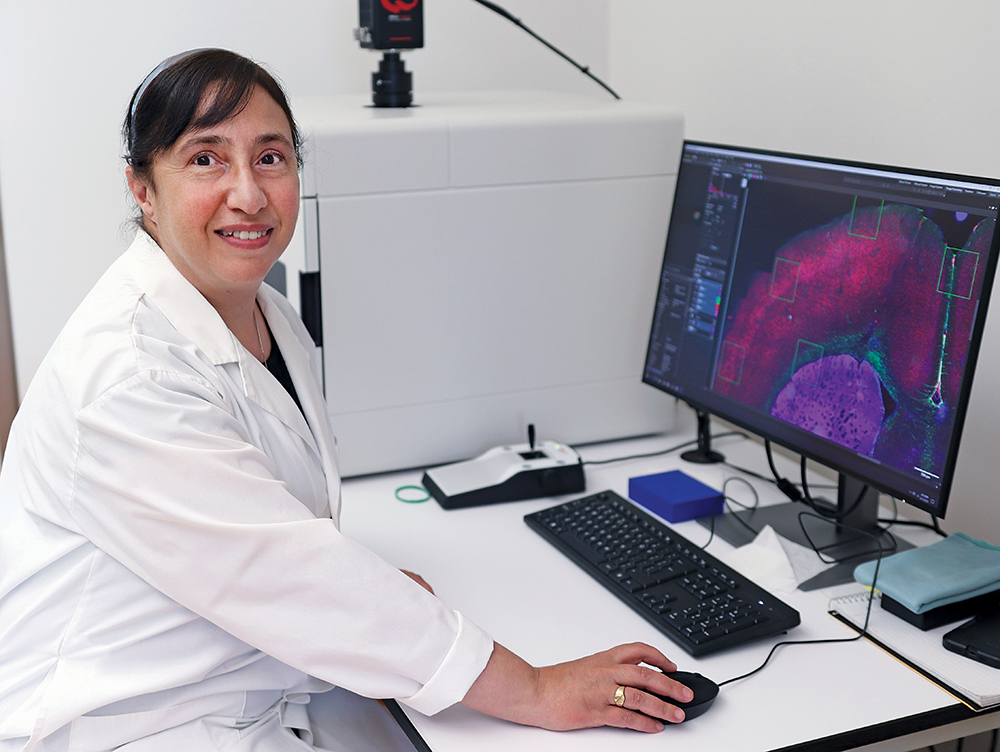If you scan the titles of Dr. Lucy Marzban’s numerous published studies from the past 18 years, her scientific obsession is clear.
The associate professor in the College of Pharmacy is driven to understand what goes wrong inside the islets – small “islands” of hormone-secreting cells in the pancreas – that leads to diabetes.
In the islets, how does a toxic protein buildup called amyloid kill beta cells that produce the essential hormone insulin? And can amyloid formation be slowed or prevented?
Publishing in journals such as Diabetes, Diabetologia, Endocrinology and Molecular Endocrinology, Marzban has relentlessly investigated the molecular mechanisms of the disease.
“We are one of the few labs in the world studying amyloid formation in diabetes,” she says.

Through more than a decade of intensive study (2008 to 2019), Marzban’s lab was the world’s first to identify the process by which amyloid destroys insulin-producing beta cells in human pancreatic islets.
Those findings have now enabled her team to develop a blood test that detects amyloid formation in the pancreas.
“It’s the first diagnostic tool of its kind that can detect amyloid at a very early stage, before it damages cells,” she says.
Amyloid starts forming years before diabetes symptoms appear, Marzban says. By the time symptoms show up, it’s often too late to prevent significant damage to beta cells.
“Currently, there is no treatment to remove amyloid once it forms. But in our lab experiments with cultured human islets, we have identified several drugs that show promise for limiting amyloid formation.”
For individuals at risk of Type 2 diabetes, Marzban says, early detection and treatment to reduce amyloid formation could help protect insulin-producing cells, potentially delaying the onset and progression of the disease.
For people with Type 1 diabetes who have received transplanted islets from deceased donors, reducing amyloid formation could improve the long-term survival of the transplanted islets, decreasing the need for insulin injections.
Marzban earned her PhD in pharmacology at the University of British Columbia (UBC) in 2001. She later pursued postdoctoral work at UBC, the BC Children’s Hospital Research Institute and the University of Geneva in Switzerland. After returning to UBC, she joined UM in 2019. She is also a researcher with the Children’s Hospital Research Institute of Manitoba.
“I spend a lot of time with my trainees and students,” she says. “One of the most important parts of my job is preparing the next generation for their future careers as successful scientists.”
Marzban has long studied diabetes in lab animals. In order to investigate the disease’s effects in humans and compare diabetic with non-diabetic individuals, she receives post-mortem pancreatic tissue, for which she is immensely grateful.
“A loved one has just passed away, and the family needs to make the difficult decision of donating their tissue. It’s their sacrifice that has led to all these discoveries.”
Marzban and her team are now preparing for clinical trials and a patent for the amyloid blood test. “We’re confident the test works well,” she says. “Now it’s about bringing it to market and scaling up production.
“Once our strategy is out there, others will build on it, opening the door to new therapeutic strategies.”
BY DANICA HIDALGO CHEREWYK
